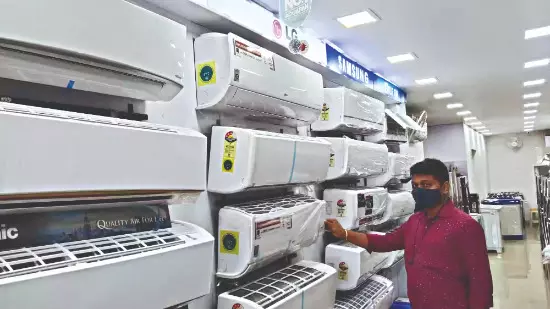Govt unlikely to implement 20 to 28°C AC temp range immediately

New Delhi: Union Environment Minister Bhupender Yadav on Friday clarified that the government is not planning to enforce a fixed air conditioner (AC) temperature range of 20°C to 28°C in the immediate future, stating such a regulation may not come into effect until after 2050.
Responding to a question at the India Climate Summit about when the proposed AC temperature limits would be implemented, Yadav said, “I do not think it will happen immediately; capacities will be gradually built for it over time. Any such situation may arise only after 2050.”
The minister reiterated India’s commitment to balancing climate action with domestic needs. “Our climate goals must align with our national circumstances and the principle of Common But Differentiated Responsibilities and Respective Capabilities (CBDR-RC),” Yadav said, referring to the global understanding that all countries should address climate change, but developed nations should take the lead due to their historical emissions and greater financial capacity.
India’s climate roadmap, known as its nationally determined contributions (NDCs), has been submitted to the United Nations Framework Convention on Climate Change. These include commitments to reducing emissions intensity and expanding clean energy while ensuring energy access to citizens.
The debate over regulating AC temperatures gained attention earlier this month when Union Minister Manohar Lal Khattar indicated that air conditioners in the country would soon be required to operate within a fixed temperature band of 20°C to 28°C, adding that operation outside this range would be disallowed. However, Yadav’s comments now suggest that such measures remain distant and would be introduced gradually.
According to the Bureau of Energy Efficiency (BEE), most ACs in Indian households currently operate at settings of 20°C or 21°C, while the optimal range for balancing comfort and energy efficiency is considered to be 24°C to 25°C. The BEE estimates that for every one-degree increase in AC temperature, electricity consumption drops by roughly 6 per cent. Moving the thermostat setting from 20°C to 24°C could save up to 24 per cent in energy use.
Energy experts have warned of the rising demand for cooling in India. A study by the India Energy and Climate Centre (IECC) at the University of California, Berkeley, projects that India could see an annual addition of 10 to 15 million new air conditioners, with up to 150 million more expected by the mid-2030s. Without policy interventions, this could drive peak power demand from ACs alone to 180 GW by 2035 — nearly a third of India’s projected total.
The IECC research also highlights that doubling the energy efficiency of room ACs could save up to Rs 2.2 lakh crore in electricity costs over the next decade and help avert potential power shortages.
This summer, AC sales saw a dramatic increase of 40 to 50 per cent compared to last year, driven by soaring temperatures. The household sector’s share in national electricity consumption has also risen steadily, from 22 per cent in 2012-13 to 25 per cent in 2022-23.
Ongoing research by the Oxford India Centre for Sustainable Development suggests that in a world 2°C warmer than pre-industrial levels, India will lead global cooling demand, followed by other densely populated nations.



